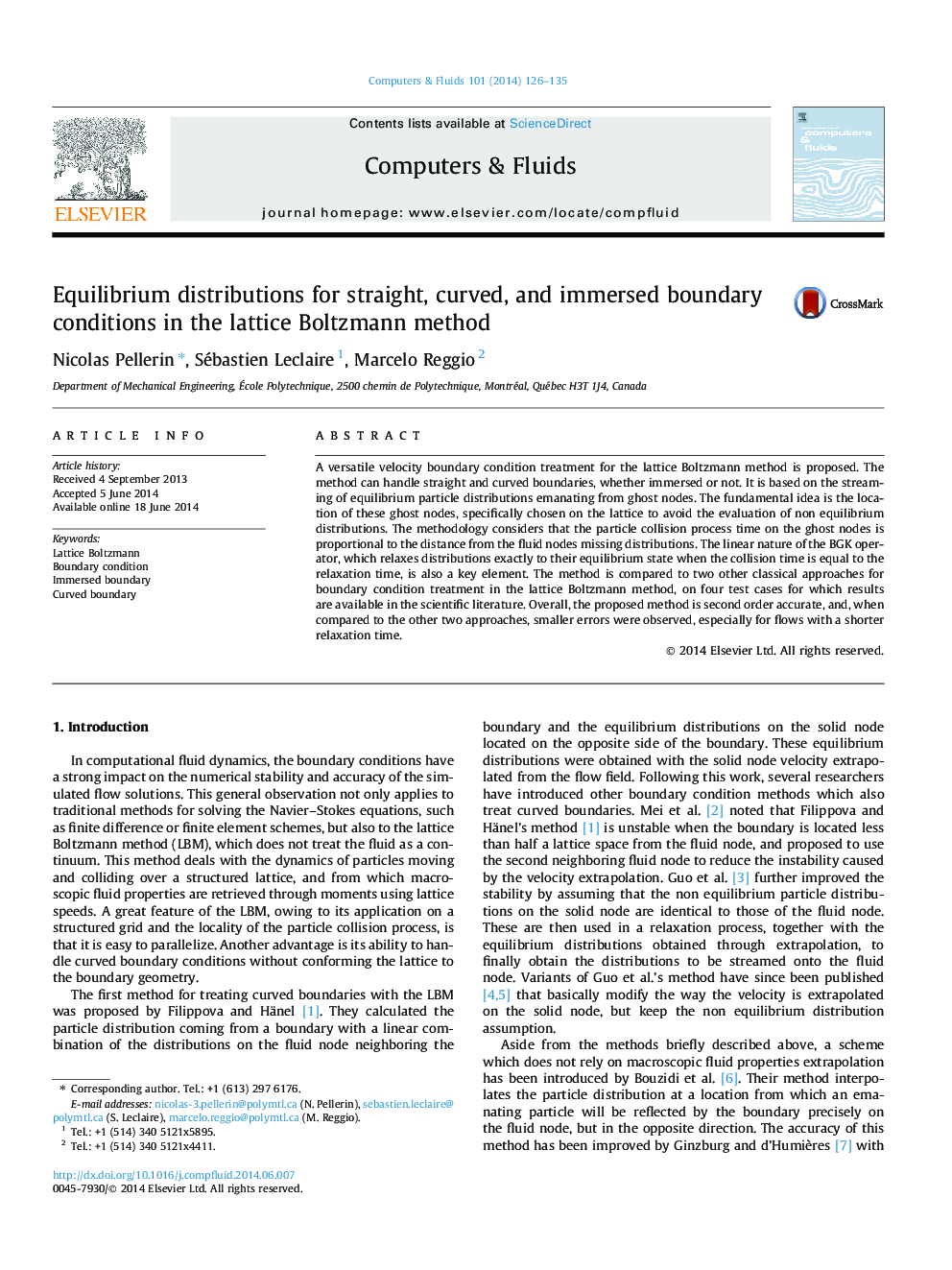| Article ID | Journal | Published Year | Pages | File Type |
|---|---|---|---|---|
| 768136 | Computers & Fluids | 2014 | 10 Pages |
•We design a new versatile boundary condition method for the lattice Boltzmann method.•We verify the proposed method with four traditional test cases.•We compare the accuracy of our method to that of two others which are significantly different conceptually.•Our method provides a gain in accuracy for lower viscosity flows.•The immersed version of our method produces smooth pressure contours across boundaries.
A versatile velocity boundary condition treatment for the lattice Boltzmann method is proposed. The method can handle straight and curved boundaries, whether immersed or not. It is based on the streaming of equilibrium particle distributions emanating from ghost nodes. The fundamental idea is the location of these ghost nodes, specifically chosen on the lattice to avoid the evaluation of non equilibrium distributions. The methodology considers that the particle collision process time on the ghost nodes is proportional to the distance from the fluid nodes missing distributions. The linear nature of the BGK operator, which relaxes distributions exactly to their equilibrium state when the collision time is equal to the relaxation time, is also a key element. The method is compared to two other classical approaches for boundary condition treatment in the lattice Boltzmann method, on four test cases for which results are available in the scientific literature. Overall, the proposed method is second order accurate, and, when compared to the other two approaches, smaller errors were observed, especially for flows with a shorter relaxation time.
